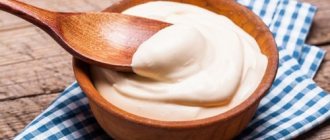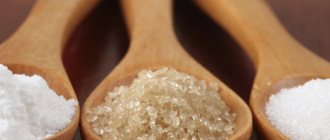Products for casserole in the diet menu
The very name of the dish contains a hint of benefit: the products included in it are not boiled, not fried, but baked. This method of preparation allows you to preserve as much as possible all the ingredients - proteins, vitamins, microelements in the most easily digestible form. According to nutritionists, casserole for pancreatitis or cholecystitis - inflammation of the gallbladder, is allowed not only in the chronic phase, but also during an exacerbation - with the exception of the period accompanied by fever, nausea, vomiting and abdominal pain. When the inflammatory process subsides and the symptoms of acute intoxication disappear, the delicacy can be safely introduced into the menu.
The dish is famous for the fact that it can be prepared from almost anything. Dietary casseroles are:
- curd,
- potato,
- cereals (semolina, rice, millet),
- meat,
- pasta.
Any of these products is suitable for a dietary table. In the cottage cheese, rice and semolina versions, fruit is added to the main component; if it is potatoes or pasta, you can add meat and a vegetable ingredient, making the dish more tasty and at the same time increasing its nutritional value.
Recipes for pancreatitis
Let's look at recipes for making casseroles that are allowed for pancreatitis; colorful and appetizing photos are also posted there. A wide selection of options allows you to make the patient’s menu as diverse as possible.
Cottage cheese
Includes the following ingredients:
- egg white from 5 eggs,
- 500 g medium fat cottage cheese,
- 1 tablespoon semolina,
- 0.5 tablespoons granulated sugar,
- sweet and sour apples – 3 pieces,
- cherries – 50 g,
- bananas - 1 piece.
Place the cottage cheese in a blender and beat until creamy. Peel the apples, remove the skins from the bananas, and remove the pits from the cherries. Puree everything in a blender separately from the cottage cheese. Mix cottage cheese with semolina, sugar, fruits and proteins, place in a mold, bake for 35 minutes in an oven preheated to 180 degrees Celsius.
This dessert can also be made in a slow cooker. You need to put the cottage cheese there with all the ingredients and turn on the device, setting it to the “Baking” mode.
Carrot casserole
- raw root vegetables – 200 g,
- milk with 3.2% fat content - 1.5 cups,
- sour cream 20% – 40 g,
- 10 g each of butter, semolina and granulated sugar,
- one egg,
- 5 g crackers,
- salt - to taste.
Rinse the carrots under running water and grate. Dilute the milk in half with water and boil the vegetable in it until half cooked. Add semolina, stirring thoroughly, and continue to simmer until tender.
Season the cooled milk-carrot mixture with granulated sugar, salt and egg. Grease a baking sheet with oil and sprinkle with breadcrumbs. Place the resulting mass on it. Bake for half an hour in the oven, setting the temperature to 180 degrees Celsius.
Vermicelli casserole with meat
The food is easy to digest and nutritious. Have to take:
- fine vermicelli - 2 cups,
- milk and water - 2 glasses each,
- white chicken meat – 300 g,
- white from 2 eggs,
- salt - to taste, but do not overuse.
Boil the chicken and put it through a blender. Boil vermicelli in a milk-water mixture, place in a colander and let drain. Put minced meat and egg whites into it and mix. Bake in the oven for 15 minutes.
Potato casserole with meat
Potato starch is combined with meat protein - one ingredient helps digestion of the other, and together they make a tasty and nutritious duo. The simplicity of preparation allows even the least experienced cook to cope. Have to take:
- veal or chicken (white meat) – 300 g,
- peeled potatoes – 600 g,
- milk – 150 ml,
- chicken eggs - 2 pieces,
- butter – 30 g,
- sour cream 20% – 20 g,
- salt - to taste.
Peel the potatoes, boil, and mash until puree, adding hot milk. Beat the puree until fluffy. Boil the meat and pass through a meat grinder or blender, mixing the minced meat with melted butter, cool the puree and add an egg to it, then divide in half. Place half the potatoes in an even layer on the bottom of the buttered pan, place a layer of minced meat on top and cover it with another layer of mashed potatoes. Spread the top layer of potatoes with sour cream and place in the oven, preheated to 250–280 degrees for 30–35 minutes for baking.
Pumpkin with rice
Pumpkin is a dietary vegetable allowed at any stage of inflammation of the pancreas. By combining it with rice, we get a nutritious and healthy dish prepared according to all the rules of nutrition. We take:
- 1 glass of rice,
- 3 – 4 cups grated raw pumpkin pulp,
- 2 eggs,
- 150 g lightly salted hard cheese with a low fat content,
- 1 tablespoon vegetable oil,
- 0.5 teaspoon salt,
- 2 glasses of water.
Rinse the rice and add water. Place in a bowl with a lid and cook in the microwave. Let the rice sit in the oven for another 10 minutes so that it absorbs the water and steams. Peel and grate the pumpkin, grate the cheese as well. Mix all ingredients and 2/3 of the grated cheese. Smooth the mixture on top and sprinkle with the remaining cheese. Bake in the microwave.
All of these casserole options are suitable for dietary nutrition of patients with pathologies of the gastrointestinal tract, including pancreatitis during the transition of the disease from the acute to the chronic stage.
The volumes of components vary as desired, the main thing is not to overuse salt and cheese, as these products irritate the pancreas.
source
Products for casserole in the diet menu
The very name of the dish contains a hint of benefit: the products included in it are not boiled, not fried, but baked. This method of preparation allows you to preserve as much as possible all the ingredients - proteins, vitamins, microelements in the most easily digestible form. According to nutritionists, casserole for pancreatitis or cholecystitis - inflammation of the gallbladder, is allowed not only in the chronic phase, but also during an exacerbation - with the exception of the period accompanied by fever, nausea, vomiting and abdominal pain. When the inflammatory process subsides and the symptoms of acute intoxication disappear, the delicacy can be safely introduced into the menu.
Milk curdling by-product and sour cream
Whey is a biologically valuable concentrate containing many vitamins: A, D, group B. However, it contains a significant amount of lactose, which worsens the patient’s condition. The patient experiences the following symptoms:
- flatulence;
- abdominal pain;
- nausea;
- diarrhea.
In the acute period of pancreatitis, nutrition should be based on the principle of excluding products that worsen the patient’s condition, therefore, feeding with homemade whey is not recommended.
During the period of remission, it is allowed to use it as an independent drink. Serum for pancreatitis is introduced into the patient’s diet very carefully.
It is recommended to drink the drink starting from 50 ml during breakfast.
Sour cream for pancreatitis, along with low-fat kefir, can be used in small quantities, but only after consulting a doctor. In the acute period of the disease, the product is completely excluded from the diet.
For pancreatitis, you can add sour cream to prepared dishes if the disease is in clinical remission. Start using the product with 1 tbsp. l. 1 per day. It is undesirable to include sour cream in the diet of patients suffering from intestinal dysbiosis for pancreatitis. With stable remission, you can eat a product with a fat content of no more than 10-15%.
ul
Recipes for pancreatitis
Let's look at recipes for making casseroles that are allowed for pancreatitis; colorful and appetizing photos are also posted there. A wide selection of options allows you to make the patient’s menu as diverse as possible.
Cottage cheese
Includes the following ingredients:
- egg white from 5 eggs;
- 500 g medium fat cottage cheese;
- 1 tablespoon semolina;
- 0.5 tablespoons of granulated sugar;
- sweet and sour apples – 3 pieces;
- cherries – 50 g;
- bananas - 1 piece.
Place the cottage cheese in a blender and beat until creamy. Peel the apples, remove the skins from the bananas, and remove the pits from the cherries. Puree everything in a blender separately from the cottage cheese. Mix cottage cheese with semolina, sugar, fruits and proteins, place in a mold, bake for 35 minutes in an oven preheated to 180 degrees Celsius.
This dessert can also be made in a slow cooker. You need to put the cottage cheese there with all the ingredients and turn on the device, setting it to the “Baking” mode.
Carrot casserole
- raw root vegetables – 200 g;
- milk with 3.2% fat content - 1.5 cups;
- sour cream 20% – 40 g;
- 10 g each of butter, semolina and granulated sugar;
- one egg;
- 5 g crackers;
- salt - to taste.
Rinse the carrots under running water and grate. Dilute the milk in half with water and boil the vegetable in it until half cooked. Add semolina, stirring thoroughly, and continue to simmer until tender.
Season the cooled milk-carrot mixture with granulated sugar, salt and egg. Grease a baking sheet with oil and sprinkle with breadcrumbs. Place the resulting mass on it. Bake for half an hour in the oven, setting the temperature to 180 degrees Celsius.
Vermicelli casserole with meat
The food is easy to digest and nutritious. Have to take:
- fine vermicelli – 2 cups;
- milk and water - 2 glasses each;
- white chicken meat – 300 g;
- white from 2 eggs;
- salt - to taste, but do not overuse.
Boil the chicken and put it through a blender. Boil vermicelli in a milk-water mixture, place in a colander and let drain. Put minced meat and egg whites into it and mix. Bake in the oven for 15 minutes.
Potato casserole with meat
Potato starch is combined with meat protein - one ingredient helps digestion of the other, and together they make a tasty and nutritious duo. The simplicity of preparation allows even the least experienced cook to cope. Have to take:
- veal or chicken (white meat) – 300 g;
- peeled potatoes – 600 g;
- milk – 150 ml;
- chicken eggs - 2 pieces;
- butter – 30 g;
- sour cream 20% – 20 g;
- salt - to taste.
Peel the potatoes, boil, and mash until puree, adding hot milk. Beat the puree until fluffy. Boil the meat and pass through a meat grinder or blender, mixing the minced meat with melted butter, cool the puree and add an egg to it, then divide in half. Place half the potatoes in an even layer on the bottom of the buttered pan, place a layer of minced meat on top and cover it with another layer of mashed potatoes. Spread the top layer of potatoes with sour cream and place in the oven, preheated to 250–280 degrees for 30–35 minutes for baking.
Pumpkin with rice
Pumpkin is a dietary vegetable allowed at any stage of inflammation of the pancreas. By combining it with rice, we get a nutritious and healthy dish prepared according to all the rules of nutrition. We take:
- 1 cup rice;
- 3 – 4 cups grated raw pumpkin pulp;
- 2 eggs;
- 150 g lightly salted hard cheese with a low fat content;
- 1 tablespoon vegetable oil;
- 0.5 teaspoon salt;
- 2 glasses of water.
Rinse the rice and add water. Place in a bowl with a lid and cook in the microwave. Let the rice sit in the oven for another 10 minutes so that it absorbs the water and steams. Peel and grate the pumpkin, grate the cheese as well. Mix all ingredients and 2/3 of the grated cheese. Smooth the mixture on top and sprinkle with the remaining cheese. Bake in the microwave.
All of these casserole options are suitable for dietary nutrition of patients with pathologies of the gastrointestinal tract, including pancreatitis during the transition of the disease from the acute to the chronic stage.
The volumes of components vary as desired, the main thing is not to overuse salt and cheese, as these products irritate the pancreas.
source
How is cottage cheese useful for pancreatitis?
- calcium and phosphorus, necessary for the health of the skeletal system;
- casein (milk protein), which has high nutritional value and can replace animal proteins;
- B vitamins;
- minerals that help strengthen bones and the nervous system;
- amino acids.
Cottage cheese has several properties that make it a useful product for patients with pancreatitis. First of all this:
- The ability to limit the inflammatory process;
- Ability to produce protease inhibitors;
- Increasing the body's defenses;
- Reducing the risk of possible complications.
In the acute form of this disease, cottage cheese should be introduced into the diet immediately after fasting, since this product is easily absorbed by the body and is enriched with the necessary protein.
Please note that for pancreatitis, low-fat cottage cheese is recommended for consumption.
Useful properties of cottage cheese for pancreatitis
Making cottage cheese is a very simple process. When the starter is added, the milk gradually ferments and over time takes the form of cottage cheese. After pressing (separating the finished product from the whey), the cottage cheese can be eaten. The fermented milk product is primarily famous for its high content of easily digestible protein. The finished product comes in three types of fat content:
- Low fat (0% fat);
- Bold (0.5%-3%);
- Fatty (more than 3% fat).
Many people are mistaken, thinking that the lower the percentage of fat content, the less benefit there is in the cottage cheese. This is not true at all: the amount of protein and calcium is not affected by the percentage of animal fats. When treating the pancreas, doctors recommend eating low-fat or low-fat cottage cheese.
100 grams of cottage cheese contains:
- 22.0 g proteins;
- 3.3 g carbohydrates;
- 0.7 g fat;
- 105 kcal.
The average daily consumption of cottage cheese in its pure form or in dishes prepared from it should not exceed 250 grams.
Rules for using the product
In order for cottage cheese to bring only benefits, it must be consumed wisely. People diagnosed with pancreatitis can eat it as a separate dish or prepare a variety of desserts from it.
During exacerbations of the chronic form and acute pancreatitis, it is better to switch to low-fat (0.6%). If the inflammation has subsided and there are no digestive disorders (nausea, diarrhea), it is possible to eat cottage cheese with a fat content of up to 5%. During the period of remission, it is allowed to consume a semi-fat product (9%). In case of stable remission, the fat content is increased with caution to 18%.
It is worth taking into account the following recommendations:
- The best choice for pancreatitis would be cottage cheese with a fat content of 3%, which is served grated.
- The combination of a raw product with milk is undesirable - this will cause additional irritation of the pancreas.
- The daily norm in its pure form is 200 g, no more than three times a week. No more than 100 g is allowed at one time.
- The best time to eat cottage cheese is between other meals (second breakfast, afternoon snack). It is better to avoid the product in the evening, as it will be difficult for the pancreas to digest food at night.
- During remission, it is allowed to mix with cereals, pasta, eat it in the form of lazy dumplings, or as a filling in savory baked goods.
Note! Give up the habit of generously sprinkling cottage cheese with sugar or jam. Many fresh fruits are also included with caution for pancreatitis.
You can actively include souffles, casseroles, and puddings in your daily menu. They are allowed to be consumed immediately after breaking the fast. A little later, they begin to add greens, low-fat sour cream and vegetables. If the patient has a calcium deficiency, switch to calcined cottage cheese or additionally supply the product with this substance.
Features of use in childhood and pregnancy
Growing children's bodies especially need curd products. They begin to introduce it into the diet at 8 months. At an older age, it is allowed to give low-fat cottage cheese up to 3 times a day (both morning and evening, but no later than 2 hours before bedtime). Babies have a more intense metabolism, so digestion occurs faster.
You can introduce cottage cheese into your baby’s diet no earlier than the eighth month.
For pregnant and lactating women, cottage cheese is an indispensable product. It is suitable for nutrition in all respects. It contains elements that are extremely important for the development of the fetus. If the unborn child does not have enough calcium, he will begin to make up for the deficiency at the expense of the mother’s body. And this is fraught with problems with teeth and bone fragility.
Benefits and potential harm
Cottage cheese casserole is a nutritious, tasty and healthy dish that can be included in the diet for acute pancreatitis already 3 weeks after the attack occurs. Cottage cheese is well absorbed, helps normalize digestion and eliminate dyspepsia that accompanies inflammation of the pancreas. Protein, contained in large quantities in this product, stimulates the regeneration of cells in the affected organ and accelerates recovery, while vitamins and minerals help strengthen the immune system and improve the condition of the entire body.
Benefits of cottage cheese for other stomach diseases
Inflammation of the pancreas is often caused by other diseases, such as gastritis or cholecystitis. Is it fashionable to eat fermented milk products with such diagnoses and stomach ulcers? Cottage cheese for gastritis or cholecystitis, as in the previous two cases, is a necessary element of the therapeutic diet. It is prescribed to patients along with such healthy foods as lean meat, boiled vegetables, vegetable soups, green tea. If you have cholecystitis, it is harmful to eat cabbage and eggplants.
A common disease of the gastrointestinal tract is a stomach ulcer. To treat it, experienced nutritionists often use cottage cheese, which is rich in useful elements such as calcium, phosphorus, vitamins B, A, and PP.
If you have a stomach ulcer, you need to introduce fermented milk products and a variety of cottage cheese dishes into your daily diet - cheesecakes, puddings, sweet curd desserts.
Therapeutic diet based on curd dishes
Since an important part of the complex treatment of pancreatic diseases is a therapeutic diet, knowing the recipes for preparing healthy and at the same time tasty dishes, you can diversify the menu.
Diet is necessary to prevent further destruction of the pancreas and to restore the body as a whole.
A strong argument in favor of casserole is the fact that the consistency of dishes prepared with cottage cheese significantly reduces the load on the pancreas and helps reduce gas formation.
The basic principles of nutrition during this period are:
- frequent meals - 5-6 times a day, but in small portions;
- the diet should consist of easily digestible foods;
- The food should not be too hot or too cold.
Cottage cheese is an ideal product for following a diet during illness. It is eaten in grated form, as well as as a pudding or casserole.
Rules of use
Processing foods in the oven will help preserve nutritional value, as it minimizes the destruction of vitamins, proteins and microelements, which is very important for pancreatitis. Gastroenterologists note the high digestibility of such dishes immediately after the symptoms of inflammation disappear.
It is recommended to include cottage cheese-based products for pancreatitis several days after the end of the acute phase of the disease. The permissible fat content of a fermented milk product should not exceed 3% with an acidity not exceeding 170°Turner, however, to prevent a possible negative reaction from the body, it is better to use low-fat cottage cheese.
In the chronic phase of the disease, the number of permitted products increases significantly; the consumption of casseroles and soufflés made from cottage cheese with the addition of berries, dried fruits and honey is allowed.
Use for acute pancreatitis
In the acute stage, on days 4-5, it is allowed to consume cottage cheese in small portions. Introduce into the diet only with the permission of a doctor. To avoid irritation of the gastric mucosa, it is not recommended to combine cottage cheese with milk.
In case of acute pancreatitis, special requirements are imposed on the food product consumed. A dish that does not meet the specified parameters will provoke an exacerbation in the patient. Cottage cheese must be consumed fresh, not sour. When rated on the Turner scale, the product should not exceed 170 units. In the acute phase of the disease, cottage cheese is eaten three times a week. During the day it is permissible to eat 300 grams of the product.
To replenish calcium deficiency in the body, prepare special calcined cottage cheese by making it yourself at home. It is better to eat not a fresh version of the dish, but a thermally processed one, for example, in the form of a cottage cheese casserole or pudding.
It is useful in the first days to eat cottage cheese soufflé or pudding, a sweet curd mass. As the condition improves, the doctor allows a gradual increase in fat content to 5 percent. Later it is permissible to include the product in food daily. Then introduce salted cottage cheese products into your diet.
Consumption of cottage cheese in the acute stage of pancreatitis
You can eat cottage cheese and casserole made from it during the acute stage, but after passing the hunger phase. The product will deliver protein that is quickly absorbed by the body. The percentage of fat content should be within 3 percent, or you can give preference to 0 percent. It is also better to monitor the acid level; according to the Turner scale, it should not be higher than 170. It is best to grind it through a sieve. If there is a lack of calcium due to pancreatitis, then it is best to eat a homemade product.
As you know, one of the parts of the recovery course at the acute stage of pancreatitis is fasting. It allows you to improve the functioning of the stomach and intestines and eliminate the development of complications. Eating cottage cheese, as well as a recipe with it (for example, cottage cheese casserole) is permissible only after completing the fast. We are talking about introducing it in small quantities on the second or even third day.
Experts strongly recommend adhering to the norms of fractional nutrition, and also refusing to use the product together with milk. This is known to cause irritation in the pancreas area. To ensure that patients do not have questions related to the use of cottage cheese, it is strongly recommended that they familiarize themselves with all the rules that will help not only choose the right cottage cheese, but also use it correctly.
First of all, you can and should pay attention to the fact that the product should have a fat content of no more than 3%. This will make it possible to eliminate the possibility of excessive load on the pancreas. In addition, experts recommend using fresh varieties or even cottage cheese that was prepared independently. The same applies to how to use any recipe, for example, cottage cheese casserole, which is recommended to be eaten - this will be discussed later.
Further, experts draw attention to the fact that the most important criterion is the acidity of the cottage cheese, which should be no more than 170 Turner units. This is necessary in order not to exceed the increase in stomach acidity. In addition, the following criteria can and should be taken into account:
- It is best to use the product in grated form or prepare steamed pudding;
- the lack of calcium can be compensated for by a special type of cottage cheese, namely calcined. You can prepare it yourself, but it is best to purchase a ready-made name;
- It is unacceptable to consume cottage cheese, pudding or any other recipe, even if it is a cottage cheese casserole, daily. It is recommended to limit yourself to two to three sessions within one week.
The amount of cottage cheese should not be more than 250 g. during the day, while at one time it is strongly recommended not to use more than 150 grams, including if it is a cottage cheese casserole.
It is noteworthy that during the first days after fasting and starting to eat cottage cheese, people consume mainly sweet masses, puddings and soufflés, while later it is quite acceptable to add salty cottage cheese products to the diet. How it is possible and whether it will be useful to use go during the development of a chronic form of pancreatitis will be discussed further.
Is it possible to eat cottage cheese if you have inflammation of the pancreas?
Cottage cheese is one of the few products allowed for consumption during the acute phase of inflammation of the pancreas. It is easily digestible and contains many proteins beneficial to the human body, which are much easier to digest than other animal proteins. Cottage cheese for pancreatitis can be consumed both as an independent dish and in combination with other products.
- helps limit the development of the inflammatory process;
- significantly enhances the activity of the immune system;
- reduces the risk of complications;
- enhances the production of protease inhibitors;
- Lecithin, which is part of cottage cheese, helps remove harmful cholesterol from the body;
- The calcium contained in cottage cheese is involved in the restoration of nails, hair and bone tissue.
After the end of the fasting period, curd products can begin to be introduced into the patient’s diet on the second or third day. At the same time, you should adhere to the principles of fractional nutrition and not consume cottage cheese with milk, this provokes the development of irritation of the pancreas.
In order not to provoke the development of an exacerbation of the disease or deterioration of the patient’s condition, it is necessary to know about the peculiarities of consuming cottage cheese during this period. In order not to increase the load on the pancreas, it is necessary to introduce into the menu a product with a fat content of no more than 3%.
Important!
The cottage cheese must be fresh, or it is better to prepare it yourself. To do this, you need to take a liter of milk (preferably pasteurized) and boil it. Pour the juice of half a lemon into the boiling milk, and when it curdles, remove the pan from the heat and discard its contents through a double layer of gauze. After the whey has completely drained, the homemade cottage cheese is ready.
In order not to cause an increase in the acidity of gastric juice, the acidity of the cottage cheese should not exceed 170 Turner units. You can use the product in shabby form, or you can prepare steamed pudding. Calcium deficiency can be compensated for by dishes prepared from calcined cottage cheese.
To prepare such a product at home, you need to add calcium (lactic acid or chloride) to the milk. You cannot consume curd pudding or mass daily, 2-3 times a week is enough.
The amount of cottage cheese should not exceed 250 g. per day, and you should not eat more than 150 grams of this product at one time. In the first days, they most often consume sweet mass, pudding or soufflé, but later salty cottage cheese products can be introduced into the diet.
During the phase of exacerbation of pancreatitis, when consuming cottage cheese, one should adhere to the same principles as during an acute disease. During the period of subsiding inflammation in the absence of symptoms of product intolerance, which include digestive disorders (nausea, vomiting, development of diarrhea) and the appearance of pain, the fat content of the cottage cheese consumed can be increased to 4-5%.
With the development of stable remission, people who suffer from pancreatitis can try introducing dishes made from 20% cottage cheese into their diet, but it is worth remembering that this product can cause the development of exacerbations if the remission is not stable enough. Also, fatty cottage cheese slows down the absorption of calcium and can put a strain on the digestive system as a whole.
Let's look at preparing the most common dishes for people suffering from pancreatitis.
Cottage cheese pudding
For cooking you will need 200 g. grated cottage cheese, 2 tsp. semolina soaked in a small amount of water, 1-2 egg whites, sugar and vanillin to taste. During the period of remission, it is possible to add a small amount of grated carrots and butter.
Preparation:
- all ingredients are thoroughly mixed;
- whipped whites are added to the mixture;
- The pudding must be baked or steamed.
Cottage cheese casserole
You need to take one apple, two tablespoons of semolina, soaked in a small amount of water for swelling; 200 grams of cottage cheese; 2 egg whites, sugar and vanilla to taste.
- stir cottage cheese and prepared semolina;
- add sugar, vanilla and finely grated apple without peel to the mixture;
- Gently fold in the whipped whites;
- put the mixture in a mold and bake for at least 40 minutes at a temperature of 150-180 degrees;
- After cooking, the dish must be cooled.
You can also cook steamed cheesecakes, lazy dumplings and the most difficult dish to prepare - soufflé.
Chronic form
Doubts about whether it is permissible to eat cottage cheese when developing a chronic form of pancreatitis are understandable. At the same time, as experts note, at this stage it is necessary to adhere to the same rules as during the acute stage of the condition. At that period of disease development when there are no inflammatory processes and negative symptoms, the fat content of the product can be slightly increased and even reach 4-5%.
At the stage of formation of remission, when there are already clear diagnostic indicators, the percentage of fat content can reach nine points. At the same time, the product can be eaten not only as puddings or raw, but also as an addition to all kinds of cereals, pasta, and meat preparations. It is quite acceptable to eat such dishes as lazy dumplings, savory pastries, and cottage cheese casserole.
If stable remission develops and positive symptoms progress, experts allow the use of cottage cheese with 20% fat content. However, this must be done with caution because excessive use or use in large quantities may result in an exacerbation of pancreatitis. In addition, fatty cottage cheese can slow down the process of calcium absorption and can be a serious burden for the entire digestive system.
During remission, a high-protein diet is indicated, one of the main products of which is cottage cheese. Fat content can be increased to 5%. Cooking foods by heat treatment in the oven allows you to combine pumpkin, other vegetables and fruits, and cottage cheese in one dish
If a patient has a calcium deficiency in the body, it is recommended to prepare dishes based on calcined cottage cheese. It can be obtained at home by adding calcium chloride or lactic acid to skim milk.
Cottage cheese and the chronic stage of pancreatitis
During exacerbation of pancreatitis, the basic principles of nutrition for patients with chronic or acute pancreatitis are the same. During the phase of subsiding exacerbation, a high-protein gentle diet is indicated and cottage cheese is its permanent component.
In case of satisfactory tolerability, that is, the absence of nausea, pain, vomiting, diarrhea; and the presence of stable laboratory tests, the fat content of the cottage cheese is increased to 5%. It can be eaten in its natural form, or as part of puddings, casseroles, and soufflés. It is allowed to mix cottage cheese with meat, cereals or noodles.
During the process of remission of the disease, patients are allowed to eat low-fat cottage cheese. The list of allowed dishes with cottage cheese includes lazy dumplings or the filling of unsweetened pastries.
If the patient has persistent remission of pancreatitis, the doctor may allow the use of cottage cheese with 20% fat content, but there are several risks:
- The likelihood of exacerbation during fragile remission;
- Deterioration in the preservation of calcium, which is necessary for teeth, hair and bone mass;
- There is no possibility of losing weight, as is the case with low-fat cottage cheese.
It is best for patients with pancreatitis to consume cottage cheese not every day, but several times a week.
Casseroles to diversify the menu for pancreatitis
When compiling a menu for patients with pancreatic diseases, many often ask the question: is it possible to have cottage cheese casserole for pancreatitis? Of course, it is possible and even necessary!
Cottage cheese casserole for pancreatitis, the recipe for which can be found on the Internet or even invented independently, taking into account your taste preferences, is a healthy and, importantly, tasty dish.
Cottage cheese dishes for pancreatitis are prepared with the addition of fruits and vegetables (carrots, pumpkin, zucchini). You can also add various cereals (except millet and pearl barley) and even pasta to the casserole.
Classic recipe for making cottage cheese casserole
You can prepare this dish in different ways: steamed, in the oven or using a slow cooker. The recipe for cottage cheese casserole for pancreatitis is easy to prepare and will not cause you any trouble in the kitchen.
Recipe for making cottage cheese casserole for pancreatitis in the oven: Ingredients:
- cottage cheese - 500 g;
- eggs - 3 pcs.;
- sugar - 1/4 cup;
- semolina - 100g;
- fruits/raisins/dried apricots - 1/3 cup;
- kefir/sour cream/yogurt (low-fat) - 100g;
- butter - 1/2 teaspoon;
- baking powder.
Raisins (dried apricots) must first be softened. Mix sugar, cottage cheese, eggs until maximum homogeneity. It will be more convenient to do this using a mixer. Next, add semolina and mix again, pour in kefir with baking powder (you can use soda slaked in vinegar).
The baking dish must be greased with butter or vegetable oil, and the oven must be preheated to 180 degrees. Cooking time is 35 minutes.
- The casserole will be more homogeneous if you pour semolina with warm water for 10 minutes before cooking;
- The casserole must be cooled before serving.
The recipe for cottage cheese casserole for pancreatitis can be supplemented with your own ingredients, for example, your favorite fruits. Algorithm for cooking casserole:
- Cottage cheese should be mixed with semolina, sugar, zest, eggs, and baking powder.
- Grease the pan with butter and spread breadcrumbs on top.
- Wash the apples and cut into thin discs.
- The first layer of casserole is part of the cottage cheese, the second is fruit, the third is the rest of the cottage cheese.
- Bake the dish for 45 minutes in the oven. The temperature should vary within 180 degrees.
If you have a multicooker at home, you can prepare the cottage cheese casserole for the “Table No. 5” menu in the device by setting it to baking mode for 1 hour. Cooking algorithm:
- Combine the ingredients in a blender bowl.
- Blend the mixture to a paste-like state.
- Place the casserole in a microwave-safe dish.
- Set the device to maximum temperature mode and the timer for 5 minutes.
That's all, the finished dish needs to be cooled before eating. Despite the fact that the recipe is completely free of sugar, the result is a sweet treat for tea, approved by medical nutrition for people with pancreatitis.
There are many options for preparing casseroles, differing in the fat content of the starting products, the names of the ingredients in the dish and the heat treatment modes.
Making a casserole using a multicooker
Modern housewives have already appreciated the indispensable assistant in the kitchen - the multicooker. With its help, dishes are prepared quickly, do not burn and, most importantly, do not lose their beneficial properties.
That is why, for various diseases associated with digestion, dishes prepared in a slow cooker are included in the menu. Cottage cheese casserole for pancreatitis in a slow cooker is no exception. This dish turns out to be very tender and tasty.
Here is one of the popular recipes for preparing unsweetened cottage cheese casserole for pancreatitis in a slow cooker: Ingredients:
- low-fat cottage cheese - 400 g;
- sugar - 1 tablespoon;
- egg whites - 2 pcs.;
- semolina - 2 tablespoons;
- apple - 1 pc.;
- baking powder - 1/2 teaspoon;
- water - 40 ml.
First fill the semolina with warm water. The whites should be beaten well with sugar, the apples should be peeled, grated and lightly squeezed out the juice. You need to mash the cottage cheese, you can use a fork. Mix the ingredients, while carefully pouring in the whipped whites.
The multicooker bowl should be greased with oil, vegetable or butter. For cooking, use the “Baking” mode, cooking time is 45-50 minutes.
- To carefully remove the finished dish, you can use a special attachment designed for steaming dishes. Place the attachment on the bowl and carefully turn it over so that the casserole ends up on this attachment;
- When preparing a sweet casserole, you can add lemon zest for piquancy.
Curd casserole 2
Candied fruits and dried apricots should be soaked in water to make them soft.
Beat the eggs to form a fluffy foam. This can be done using a blender.
Add the remaining ingredients according to the recipe.
Make a batch. It should be liquid. You can add dried fruits and mix again.
Grease the bottom of the multicooker bowl with butter and pour out the mixture.
Set the baking mode and start the timer for 1 hour.
That's all. If you don’t have a multicooker, you can prepare a similar casserole in the oven at a temperature of 180 degrees.
Cottage cheese pudding
Curd pudding for pancreatitis is a very healthy, dietary, tasty and satisfying dish. The hot dessert is quickly absorbed by the digestive system. Curd pudding is steamed or baked in the oven. The recipe is quite simple.
Beat 350 g of low-fat cottage cheese in a blender, add 4 yolks, and cool the whites in the refrigerator. Next add sour cream 10% fat (80 g), 1 tbsp. l. semolina, 1 tbsp. l with a hill of starch. The mixture is thoroughly mixed with a mixer or blender. Beat the whites and add 0.1 kg of sugar in a thin stream. Now the 2 masses are combined into one and mixed.
The container is covered with parchment, the mass is poured into it, and covered with foil. Place in the oven for 30 minutes at 180°C. When the pudding is slightly browned, remove the foil and leave for another 5 minutes. Then turn off the oven, open the door slightly and let it stand for 15 minutes. The pudding is removed from the mold when completely cooled. Serve with sour cream or berry sauce.
Important information: How to identify and stop an attack of acute pancreatitis
For pancreatitis, recipes for this dish allow cooking in a slow cooker in the “baking” mode.










